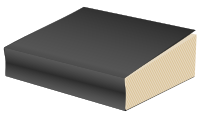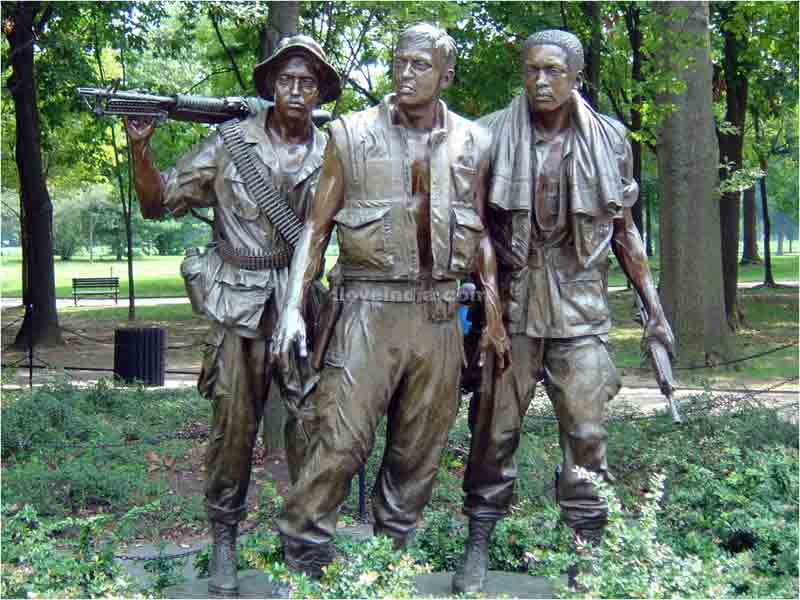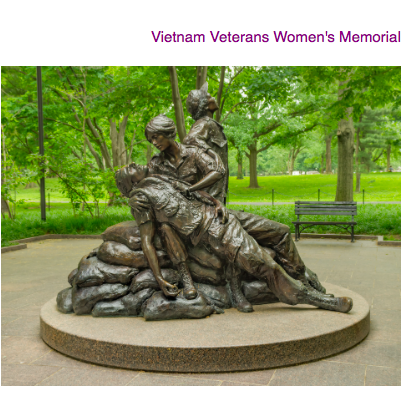

 Connecting Massachusetts Standard: United States History II.28
Connecting Massachusetts Standard: United States History II.28
Analyze the diplomatic and military policies of the War in Vietnam
 Cross-Links:
Cross-Links:
Causes and Consequences of the Vietnam War
Vietnam War Key Events
Topics on the Page
Historical Background and Overview
Primary Sources
Multimedia Sources
Multicultural Resources
U. S. and Vietnamese Women during the War
LGBTQIA People and the War
Literature Connections
In the Lake of the Woods by Tim O'Brien
Ho Chi Minh, 1946

Historical Background and Overview
START WIKIQUEST HERE
 Primary Sources
Primary Sources
Read the following primary sources.
What do you think is the main point that each makes about the war?
Vietnamese Declaration of Independence, 1945: Asserts Vietnam's independence and denounces colonial rule.
President Johnson's Message to Congress (August 5, 1964): The main point of President Johnson's message is to justify his decision to increase American involvement in the Vietnam War. The message states that the North Vietnamese have attacked American ships in the Gulf of Tonkin and that this action requires a strong response from the United States. The message argues that the United States has a responsibility to defend South Vietnam from communist aggression and that American military intervention is necessary to achieve this goal.
Joint Resolution of Congress, H.J. RES 1145 (August 7, 1964): Authorizes the President to take any measures necessary to repel any armed attack against the United States and to prevent further aggression in Vietnam. The Resolution essentially grants the President broad powers to conduct military operations in Vietnam without a formal declaration of war.
Beyond Vietnam: A Time to Break Silence Speech, Martin Luther King, Jr. April 4, 1967:The speech argues that the war is a distraction from pressing domestic issues, such as poverty and racial inequality. Criticizes American involvement in Vietnam, calling for a re-evaluation of American priorities and arguing the war is immoral and not justified by concerns over communism.
 What were the intended and unintended consequences of the American War in Vietnam for both the Vietnamese and the American people?
What were the intended and unintended consequences of the American War in Vietnam for both the Vietnamese and the American people?
Intended Consequences for American People:
- Containment of communism: The United States entered the war with the primary goal of containing the spread of communism in Southeast Asia, which they believed was a threat to global democracy and freedom.
- Military intervention: The war also served as a way for the US to establish its military presence in Southeast Asia, in an attempt to exert its influence and protect its interests in the region.
- Defense of South Vietnam: The US also saw the war as a way to defend South Vietnam and prevent it from being taken over by the communist North Vietnamese.
Unintended Consequences for American People:
- Loss of lives and resources: The war resulted in the loss of over 58,000 American lives and significant resources, leading to economic strain and social unrest in the US.
- Political division: The war also deeply divided the American people and led to widespread protests and demonstrations against the government's handling of the conflict.
- Erosion of trust in government: The government's handling of the war eroded the public's trust in government institutions, which contributed to a shift in American attitudes towards government authority.
Intended Consequences for Vietnamese People:
- Unification: The North Vietnamese government aimed to reunify the country under a communist government, and the war ultimately achieved this goal in 1975.
- End of foreign intervention: The war led to the withdrawal of foreign troops and a cessation of foreign intervention in Vietnam, allowing the country to pursue its own political and economic path.
- Increased national pride: The war also contributed to a sense of national pride and unity among the Vietnamese people.
Unintended Consequences for Vietnamese People:
- Loss of lives and resources: The war resulted in the loss of an estimated 1.1 million North Vietnamese soldiers and civilians, as well as 200,000 South Vietnamese soldiers and civilians. The country also suffered significant economic damage from the war, including the destruction of infrastructure and the loss of valuable resources.
- Social and political upheaval: The war also caused social and political upheaval in Vietnam, including the displacement of millions of people and the suppression of political dissent.
- Environmental damage: The war caused significant environmental damage, including deforestation, chemical contamination, and soil erosion, which had long-term effects on the country's natural resources and public health.
 OTHER PRIMARY SOURCE RESOURCES
OTHER PRIMARY SOURCE RESOURCES
Vietnam War Casualties Listed by Home of Record
Peace in Vietnam and Southeast Asia, Lyndon Johnson's speech to the nation, March 31, 1968 when he announced his intention to limit the war and to not seek re-election in the 1968 election.
Vietnam: An Anti-War Comic Book, written by Julian Bond in 1967 after he was expelled from the Georgia House of Representatives for opposing the war
Between the Hammer and the Sickle, a propaganda poster from 1951 (this website has lots of primary source documents)
 Multimedia Sources
Multimedia Sources
What do the following Multimedia Sources Tell You about how Soldiers and Civilians Experienced the War?
|
The Vietnam War: A Story in Photographs from the National Archives.
Provides documentary pictures by military photographers between 1962 and 1975.
|
The Vietnam War from Kahn Academy |
Go here for a video highlighting how the protest against the draft and the war in Vietnam were rooted in the Civil Rights Movement. |
The Three Soldiers Statute, Washington, D.C.

 OTHER MULTIMEDIA RESOURCES
OTHER MULTIMEDIA RESOURCES
Vietnam: A Television History from PBS. There are link to all 11 Episodes that were rebroadcast in 1997.
Listen to a podcast critique of a Pentagon Vietnam War website by historian Nick Turse from the radio show On the Media(February 21, 2014).
Sir! No Sir! The GI Movement to End the Vietnam War, a documentary from 2005 featuring interviews from people in the GI anti-war movement.
Multicultural Resources
 What were the issues and the outcomes of the famous Muhammad Ali court case?
What were the issues and the outcomes of the famous Muhammad Ali court case?
| Click here for the Supreme Court decision in Clay v. United States (1971) |
 Click here to watch a video to see Muhammad Ali's speech about Vietnam War Click here to watch a video to see Muhammad Ali's speech about Vietnam War |
Click here to read a newspaper article from The Guardian when Ali refused to go to war |
Clay, aka Ali v. United States (1966-1971) details boxer Muhammad Ali's efforts to resist induction into the U.S. Army, a case that went to the Supreme Court and resulted in Ali being stripped of his heavyweight boxing championship.
Muhammad Ali, 1966

- He had converted to Islam and refused to serve, citing religious beliefs.
- Convicted of draft evasion, fined $10,000, and had his license to box and his passport revoked.
- Was barred from boxing during the prime of his career, from age 25 to age 29.
- He regained the title defeating George Forman in 1974 (see "Tough Suspensions in Sports Don't Always Stick," The New York Times, January 12, 2014).
OTHER RESOURCES
Spotlight on African Americans: Vietnam Center and Archive, Texas Tech University
Click here for online excerpts from Amazon.com from UMASS Amherst Professor Christian Appy's book Patriots: The Vietnam War Remembered From All Sides.
.png) Women in the Vietnam War
Women in the Vietnam War
What were different roles played by Women from the United States and Vietnam during the War?
United States Women during the war

- U.S. Women represented only 1.4% of the military at the time. There were much fewer military occupational specialties open to women. Occupations that were open included nursing and clerical work. A majority of women entered the force as military nurses.
- Approximately 11,000 American military women were stationed in Vietnam during the war. Ninety percent were nurses.
- The Army Nurse Corps Motto was "to preserve the fighting force". Most of this was done through rapid triage, with GI's having first priority.
- Women in the Red Cross also served as morale boosters for the soldiers; organizing games for the men to play.
To find out more about the role of women in the Vietnam War, see this essay called Women, the Unknown Soldier.
Women Strike for Peace, 1961-1975
Women Strike for Peace (WSP) was formed in 1961 after over 50,000 women across the country marched for peace and against above ground testing of nuclear weapons.
- By the mid 1960s the focus of the organization shifted to working against the Vietnam war.
- Dorothy Marder took photographs at many WSP demonstrations on the East Coast and her images appeared in WSP publications. Her photographs show the women behind WSP who wanted to protect their families from nuclear testing and a male-dominated militarism.
- Leaders of the organization include Dagmar Wilson, Bella Abzug, Amy Swerdlow, Cora Weiss, and many more are featured in Dorothy Marder's photography.
6 Legendary Vietnam-Era Anti-War Movement Protests Everyone Should Know
Women in Vietnam during in the war

- In Vietnam, there was a long standing tradition of women warriors. Vietnamese proverb: "In times of war, even the women must fight"
- The desire to fight as soldiers came from their desire for liberation. They had extreme loyalty to their cause, mutual respect for fellow soldiers, and an idea of a collective achievement of revolution.
- Women fought as Viet Cong guerrilla soldiers, village self-defense, intelligence gatherers, medical and morale, and builders and maintainers of the Ho Chi Minh trail.
- One notable soldier was Dang Thuy Tram, who fought for the Viet Cong.
- Click here to read excerpts and see images from her diary.
- Click here to read an article about the diary from NPR.
LGBTQ+ people in the Vietnam War
This article talks about the way gay men were treated during the Vietnam War.
.png) In the Lake of the Woods by Tim O'Brien.
In the Lake of the Woods by Tim O'Brien.
Comments (0)
You don't have permission to comment on this page.